The Secret Depth Of Uncharted 4’s Art Design
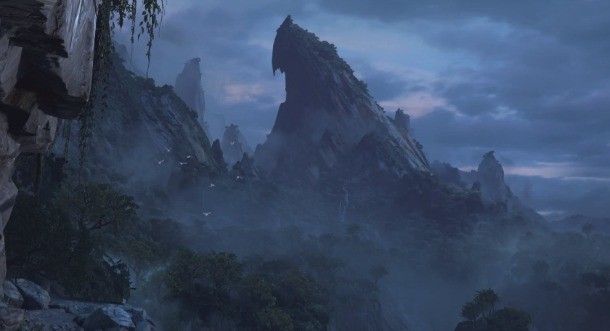
The dense foliage of Madagascar holds many secrets. The bones of the dead highlight failed attempts at uncovering its mysteries, and the trees blanket the sigils that once pointed to the whereabouts of a lifetime of riches.
This world is teeming with life. Birds take to the skies, waterfalls tumble in the distance, and the lush greenery flows peacefully in the wind. Although you may never notice it, the world is also feeding off of the emotions of its latest visitor, veteran treasure hunter Nathan Drake.
After tumbling off of a ship and washing up ashore, Nathan is noticeably troubled when we first see him in the demo that debuted at Sony's PlayStation Experience expo. “He’s been separated from his brother,” says director Bruce Straley. “There’s a sense of loss and desperation. He may have some things on his conscience regarding the choices he’s made.”
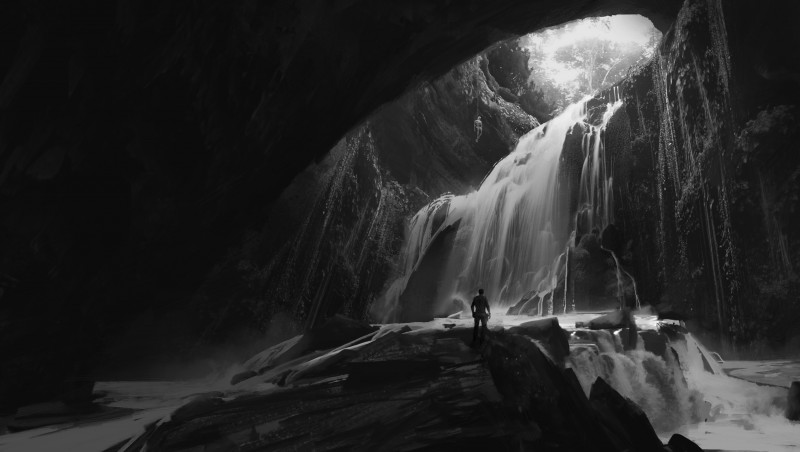
Throughout the demo, Nathan's state of emotional distress is displayed visually within the environment. “The rocks are sharp, angular, and reflective of Nathan’s feelings at that point,” Straley adds. “The lighting when you come out of the cave is darker and blue to convey a feeling of depression. The angularity of the rocks is giving a sense of tension. For the cliff side, you’ll notice a lot of the edges are tilting in to give a sense of unbalance.”
These little touches, including Nathan’s shirt being blue, will likely go unnoticed by the player, but are carefully crafted by the artists and storytellers at Naughty Dog to further express the emotional conflict at hand. As Nathan progresses deeper into the jungle, the atmosphere of this scenario lightens when he locates an item that will aid him in his quest. This item, the piton (a metal spike used for climbing), basks in a lone beam of sunlight. A visual cue that leads the eye, but also carries a hint of Nathan's emotions.
Once Nathan secures the piton, he uses it to ascend to a new area, one that is better lit and reflective of him gaining confidence. Many of the platforms are covered in green moss, a switch from the water and mud he trudged through seconds ago. It’s still a little wet and dark, yet more peaceful in composition.
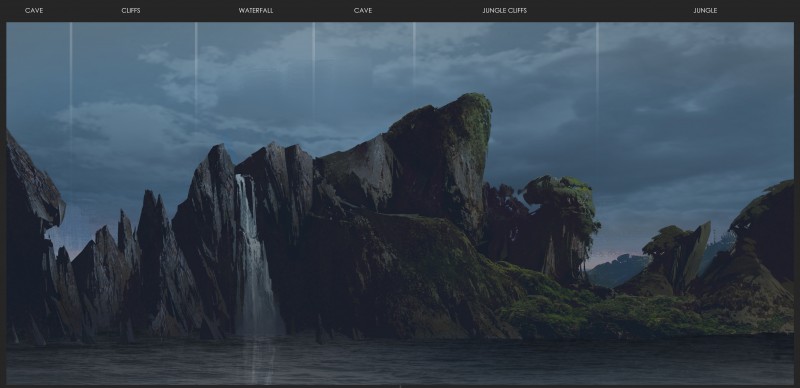
When Nathan stumbles upon a mercenary group on the hunt, the scenery shifts again, growing slightly more vibrant and clear – indicating he may be thriving off of the adrenaline rush.
At the conclusion of the demo, the confrontation with his brother takes place under the shadows of a tree canopy, a potential hint that Nathan still doesn't fully trust his brother.
The color-scripting technique used in this demo is a process Naughty Dog has been evolving since the original Uncharted. Straley says. “Our first attempt with color scripting like this was the Amazon jungle at the beginning of the game with Sully and Nathan together. All of the rocks and palm leaves are rounded. The lighting is warm. It has an appealing, high-adventure feel to it. And then we crash land on the island. You’ll notice all of the leaves are a little more jagged, and there’s a blue-green tone to the world now. That was an amateur attempt, but that was our first go at it.”
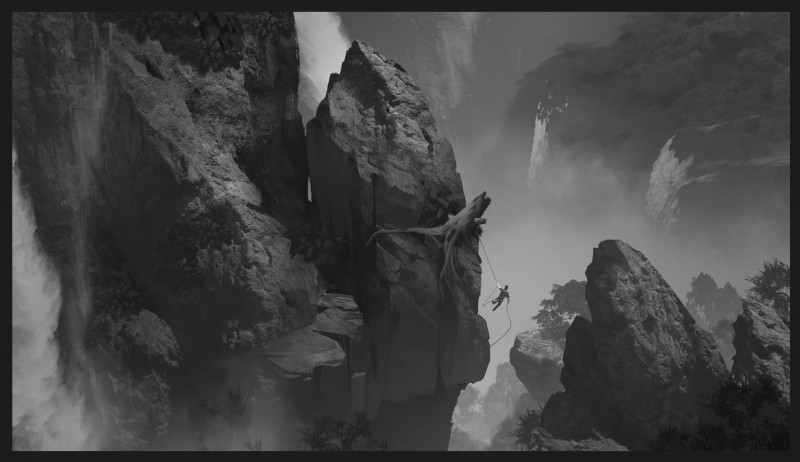
“The evolution of that was in Uncharted 2 when Jeff the cameraman dies,” says creative director Neil Druckmann. “Going into that temple, you have your whole crew, everyone is happy, and the sun is out. Going out, it’s raining, pouring, lightning, all of the characters are yelling at each other, it’s a much faster pace, there are more enemies – it’s all paralleling where the characters are in the story. That moment really defines Nathan Drake. Do I leave this guy behind and go on the path of being a selfish treasure hunter, or do I put everything on the line to save someone I care about? That’s why it was so important to build this moment up.”
Altering the look of a level to accommodate the the story or the characters’ emotions is a difficult process that lasts for the majority of the game’s development. Altering lighting can affect the readability of a level, and potentially hide carefully placed details that the artists included to help players navigate the terrain.
From the outset of creating a level, the art team figures out the color scripts and flow while talking to the directors. “You want to feel confident about your foundation, because once you start adding layers of detail, it becomes harder to make broad changes,” says artist Adam Littledale. “One of the challenges of making a jungle environment is they are filled with so much visual noise – layers of branches, bushes, twigs, vines, rocks, etc. It is the artist’s job to try to organize these elements into visually appealing compositions, so that one’s eyes can navigate through the space, simultaneously recognizing the landscape while also maintaining the legibility of individual objects. Lighting plays a large part in this, with shadows offering areas of rest or the opportunity to isolate a focal point.”
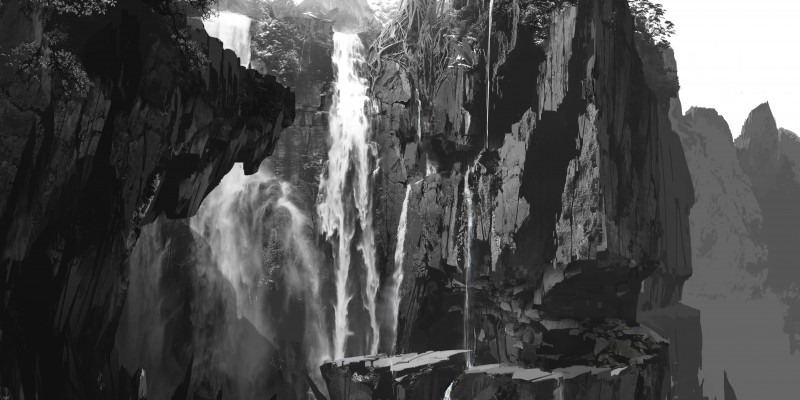
Although Littledale took reference photos of various plants at an arboretum in California, the reference pieces are mostly used for inspiration. "With Uncharted, we definitely don’t go for realism,” Littledale adds. "A lot of studios, when they are making things like plants, they take a close-up photo of a leaf and copy that exactly in the game. We just use the photo as a starting off point. We create the plants by hand. We go for more of an illustrative look, and more idealized to how we want to see it. We want realism, but pushed a little in the ways that we want them to be pushed.”
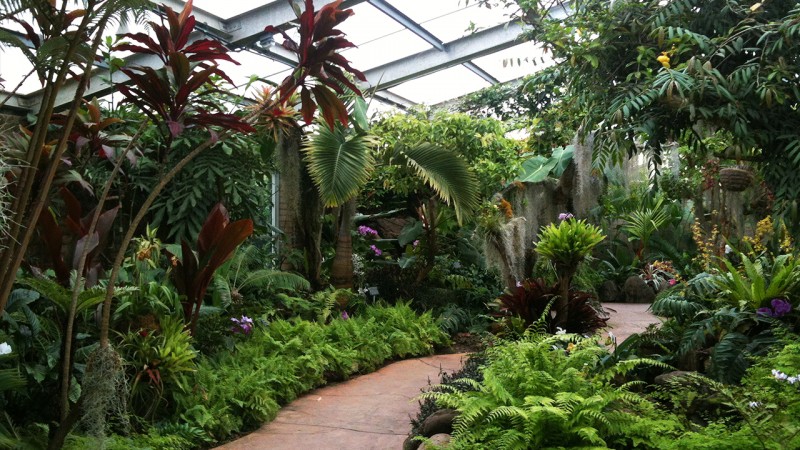
The arboretum Naughty Dog used for reference photos
Even the locations of collectible items are carefully plotted so they don’t interfere with the emotional tone of the game. Naughty Dog doesn’t want the player’s mind wandering off if the focus should be on a specific moment or mood.
Color scripting of this ilk isn’t a concept that Naughty Dog created. It’s common practice in most films in games, but studios use it in different ways. Most people rarely notice the little color-scripting touches that artists put into their work.
Knowing what you now know of Naughty Dog’s approach, go back and play The Last of Us and the Uncharted games again. Pay close attention to the environment, lighting, and character designs for emotional links and transitions. In the case of Uncharted 4, due out later this year, the world and art are as important to the story as the characters and script. It'll be interesting to see how far Naughty Dog pushes this process in what is believed to be Nathan Drake's last adventure.
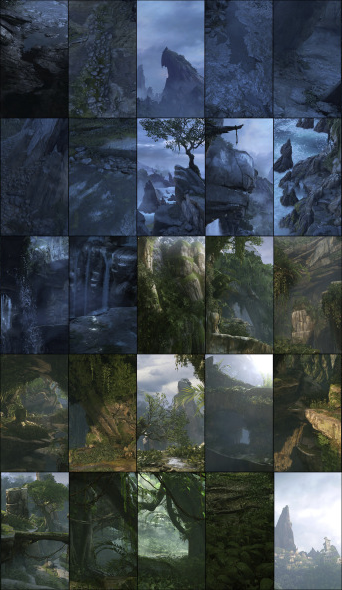
A look at the demo's lighting shift
To learn more about Uncharted 4: A Thief's End, click on the banner below to enter our hub of exclusive content that is updated throughout the month.

Get the Game Informer Print Edition!
Explore your favorite games in premium print format, delivered to your door.
- 10 issues per year
- Only $4.80 per issue
- Full digital magazine archive access
- Since 1991










